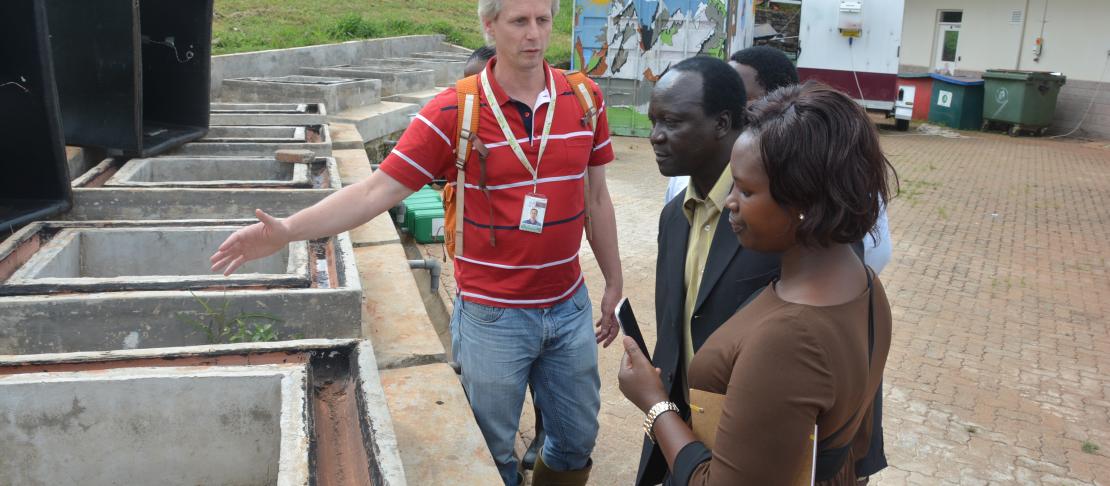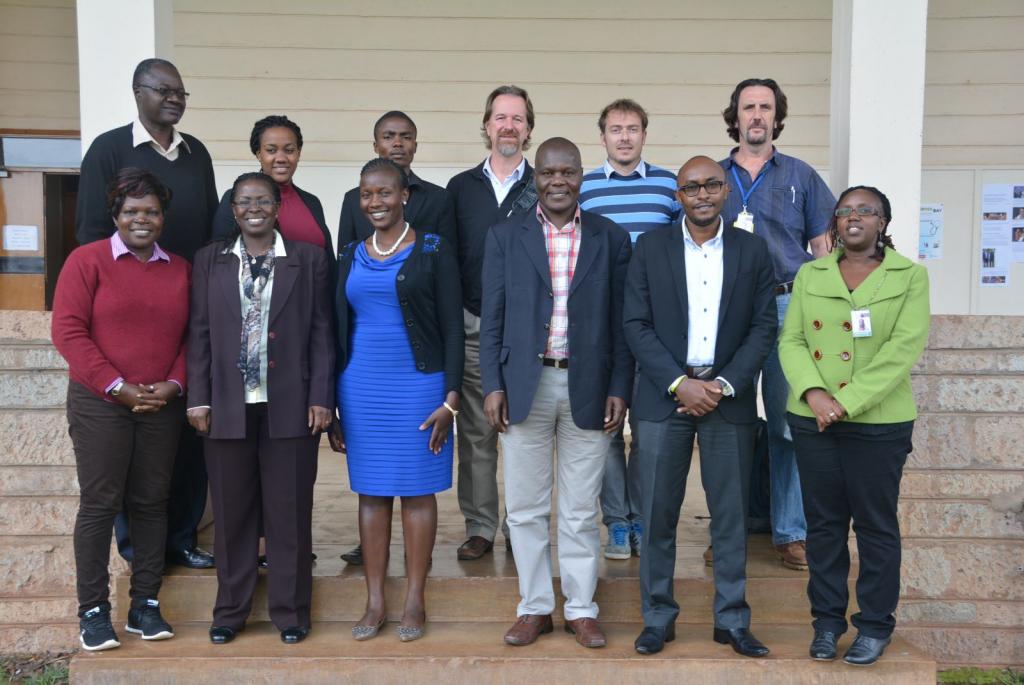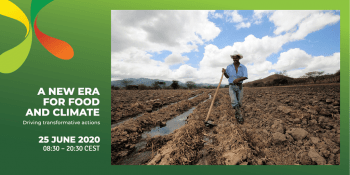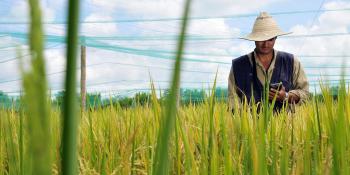Towards sustainable greenhouse gas inventories for Kenya and Uganda

Policymakers and researchers seek accurate, more reliable, region-specific emissions data.
On 3 and 4 May 2016, policy makers from climate change departments of Kenya and Uganda met with scientists from the CGIAR Research Program on Climate Change, Agriculture and Food Security (CCAFS) and the International Livestock Research Institute (ILRI) for discussions on greenhouse gas (GHG) emissions reporting.
This is especially critical as countries need to meet their obligations under the United Nations Framework Convention on Climate Change (UNFCCC) where they are mandated to develop and maintain a robust national GHG inventory system and strengthen capacity of all sector players on GHG inventory development and management. The GHG system will facilitate the countries as they prepare their Third National Communications (TNC) to the UNFCCC and Biennial Update Reporting (BUR) as well as their Nationally Determined Contributions (NDCs).
Welcoming the policymakers, ILRI’s Director General for Integrated Sciences, Iain Wright, pointed out the institution and other CGIAR centers are willing to work with governments to implement the recently submitted Intended Nationally Determined Contributions (INDCs) that incorporate adaptation and mitigation actions for addressing climate change.
 The team of CCAFS and ILRI researchers, Kenyan policymakers and journalist who were part of the roundtable meeting. Photo: V. Atakos (CCAFS)
The team of CCAFS and ILRI researchers, Kenyan policymakers and journalist who were part of the roundtable meeting. Photo: V. Atakos (CCAFS)
The roundtable meeting, held at the ILRI campus in Nairobi, provided a forum for the policymakers and researchers to dialogue about development of country-specific GHG measurements as opposed to the use of generic default factors provided by the United Nations Intergovernmental Panel on Climate Change (IPCC) as is the norm in developing countries. This is significant as “predicted emissions can be as much as ten times higher than actual emissions,“ says David Pelster, an ILRI scientist working on mitigation of GHG emissions. This may result in incorrect emission inventories leading to wrong mitigation strategies by countries.
ILRI recently established a state-of-the-art lab—Mazingira center— that is now enabling scientists to measure emissions from a full range of sources including livestock and smallholder farms, manure management systems, and other productive land use, such as forests, tea and timber plantations. The Mazingira Center was established, in part, through support by CCAFS and other partners.
Bridging the science-policy gap
CCAFS works through partnerships with various CGIAR centers and other organizations continues to support governments towards low-carbon, climate resilient economies. In her presentation during the meeting, Maren Radeny, the Regional Program Coordinator for CCAFS East Africa highlighted ongoing work in the region. For instance in 2015, both Kenya and Uganda submitted Intended Nationally Determined Contributions (INDCs) to the UNFCCC, integrating mitigation and adaptation components derived from country climate-smart agriculture framework programs (CSA-FP). The CSA-FPs were developed following continuous engagement with policymakers in Kenya, Uganda and Tanzania where CCAFS and partners provided technical guidance.
As countries continue to implement the INDCs, continuous engagement with scientists will be critical to gather relevant data and develop appropriate decision support tools.
Country-specific emission factors
David Adegu from Kenya’s Ministry of Environment, Natural Resources and Regional Development (MENRRD), Climate Change Unit, presented the country’s climate change priorities as articulated in the National Climate Change Action Plan (NCCAP 2013 - 2017). A key action under mitigation actions is the development of a GHG inventory and improvement of emissions data. Bearing in mind that the most important emission sources for Kenya are related to agriculture, and primary, to livestock, MENRRD intends to collaborate with a research organization, such as CCAFS and ILRI, to develop country-specific emission factors for enteric fermentation (digestive process in animals leading to release of methane gas) and for Nitrous Oxide (N2O) from agricultural soils.
View presentation: Building a sustainable GHG inventory management system for Kenya
Chebet Makut from Uganda’s, Ministry of Water and Environment (MWE) Climate Change department shared his country’s plans and activities in developing a GHG inventory. At the moment, the country is in advanced stages of finalizing the national inventory system through support of partners. Just like Kenya, Uganda looks towards partnering with like-minded institutions to develop national specific factors in the Agriculture, Forestry and Other Land Use (AFOLU) sector. Uganda also wishes to establish a national center of excellence for GHG compilations.
View presentation: status and activities of Uganda's GHG inventory development
ILRI researchers highlighted ongoing GHG emission-related research in the region, including emission factors from ruminants, manure management and storage, agricultural and land use, as well as social dimensions of mitigation. ILRI and other partners are also supporting the Kenyan government in the development of dairy Nationally Appropriate Mitigation Actions (NAMA).
Way forward
Going forward, both countries will continue discussions with CCAFS and ILRI researchers to build the evidence base that will ultimately lead to development of country-specific emission factors. Partners will also explore areas of collaboration on training and capacity building on GHG inventory systems.
Read more:
Sci Dev.Net: Experts call for local greenhouse gas emissions data
In an important first for Africa, climate data ‘Made in Kenya’
View photos of the visit below:
Blog by Vivian Atakos, Communication Specialist and Catherine Mungai, Partnerships and Policy Specialist. Both work for CCAFS EA and are based at ILRI in Nairobi, Kenya.



